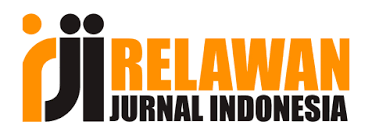Integrating Digital Tools in ELT
Abstract
Numerous educational platforms and instructional software have been developed along with the advancement of ICT. The most successful and appealing language learning experiences for students are those that combine technology with English instruction. Using technology in language learning has become the ideal instrument for achieving competence and fluency. This article discusses the advantages of integrating digital tools in teaching English as a foreign language at the university level.
References
A. R. Rahimi, “The role of twenty-first century digital competence in shaping pre-service teacher language teachers’ twenty-first century digital skills: the Partial Least Square Modeling Approach (PLS-SEM),” Journal of Computers in Education. 2024. doi: 10.1007/s40692-023-00307-6.
P. Gayatri, “Sustainable EFL Blended Education in Indonesia: Practical Recommendations,” Sustainability (Switzerland), vol. 15, no. 3. 2023. doi: 10.3390/su15032254.
E. Ekmekçi, “Pursuing a standardized content of a CALL course for pre-service EFL teachers: the procedure, impacts, and reflections,” Computer Assisted Language Learning, vol. 36, no. 5. pp. 1005–1039, 2023. doi: 10.1080/09588221.2021.1968913.
Y. Chen, “Using a Game-Based Translation Learning App and Google Apps to Enhance Translation Skills: Amplification and Omission,” International Journal of Human-Computer Interaction, vol. 39, no. 20. pp. 3894–3908, 2023. doi: 10.1080/10447318.2022.2108591.
U. Sulistiyo, “Determinants of Technology Acceptance Model (TAM) Towards ICT Use for English Language Learning,” Journal of Language and Education, vol. 8, no. 2. pp. 18–31, 2022. doi: 10.17323/jle.2022.12467.
B. Naghdipour, “ICT-enabled informal learning in EFL writing,” Journal of Second Language Writing, vol. 56. 2022. doi: 10.1016/j.jslw.2022.100893.
M. Chimbo-Caceres, “The use of web 3.0 tools for reading skill development: case blogs in virtual education,” IEEE Global Engineering Education Conference, EDUCON, vol. 2022. pp. 1544–1548, 2022. doi: 10.1109/EDUCON52537.2022.9766683.
B. Chaves-Yuste, “Podcasts’ effects on the EFL classroom: a socially relevant intervention,” Smart Learning Environments, vol. 10, no. 1. 2023. doi: 10.1186/s40561-023-00241-1.
P. Cabrera-Solano, “Using pixton for teaching EFL writing in higher education during the Covid-19 pandemic,” International Journal of Learning, Teaching and Educational Research, vol. 20, no. 9. pp. 102–115, 2021. doi: 10.26803/ijlter.20.9.7.
G. M. Kassymova, “Perceptions of digital competence in learning and teaching English in the context of online education,” Contemporary Educational Technology, vol. 15, no. 1. 2023. doi: 10.30935/cedtech/12598.
A. Mexhuani, Integrimi I Teknologjisë Informative të Komunikimit në mësimdhënie dhe nxënie. Prishtinë: Botim Isntituti Pedagjik I Kosovës, 2014.
S. Samandarov and J. Najmiddinov, “Modern innovative technologies in teaching foreign languages,” Cent. Asian J. Lit. Philos. Cult., vol. 4, no. 4, pp. 98–101, 2023.
S. Samandarov and J. Murodullaev, “DEVELOPING STUDENTS’DIGITAL COMPETENCE IN TEACHING FOREIGN LANGUAGES,” World Bull. Soc. Sci., vol. 22, pp. 11–13, 2023.
S. D. Muhamadjonovna, “The development of sociolinguistic competence of future English language teachers through computer technologies,” Eur. J. Res. Reflect. Educ. Sci., vol. 8, no. 3, pp. 147–150, 2020.
R. M. Naim, “EFL teachers’ perceptions of the barriers and opportunities for implementing elearning at afghanistan universities,” Universal Journal of Educational Research, vol. 8, no. 11. pp. 97–104, 2020. doi: 10.13189/ujer.2020.082311.
M. Abdurahmonov, S. Samandarov, B. Tolibjonov, and A. Turdiyev, “The role of ICT in EFL classroom,” Int. J. Integr. Educ., vol. 3, no. 1, pp. 132–134, 2020.
F. S. S. Alfallaj, “Non-digital gamification of the english as foreign language classroom: Developing the tools at home,” Asian ESP Journal, vol. 16, no. 52. pp. 131–152, 2020.
M. V. Zimina and N. A. Lyulyaeva, “The use of information and communication technologies in teaching foreign languages,” Mod. Probl. Sci. Educ., no. 4, 2017, [Online]. Available: https://science-education.ru/ru/article/view?id=26678
M. Dedja, “ICT in Foreign Language Teaching and Learning: Benefits and Challenges,” Eur. J. Lang. Lit., vol. 1, no. 2, pp. 42–47, 2015, doi: 10.26417/ejls.v2i1.p42-47.
K. O. Jeong, “Facilitating Sustainable Self-Directed Learning Experience with the Use of Mobile-Assisted Language Learning,” Sustainability (Switzerland), vol. 14, no. 5. 2022. doi: 10.3390/su14052894.

















